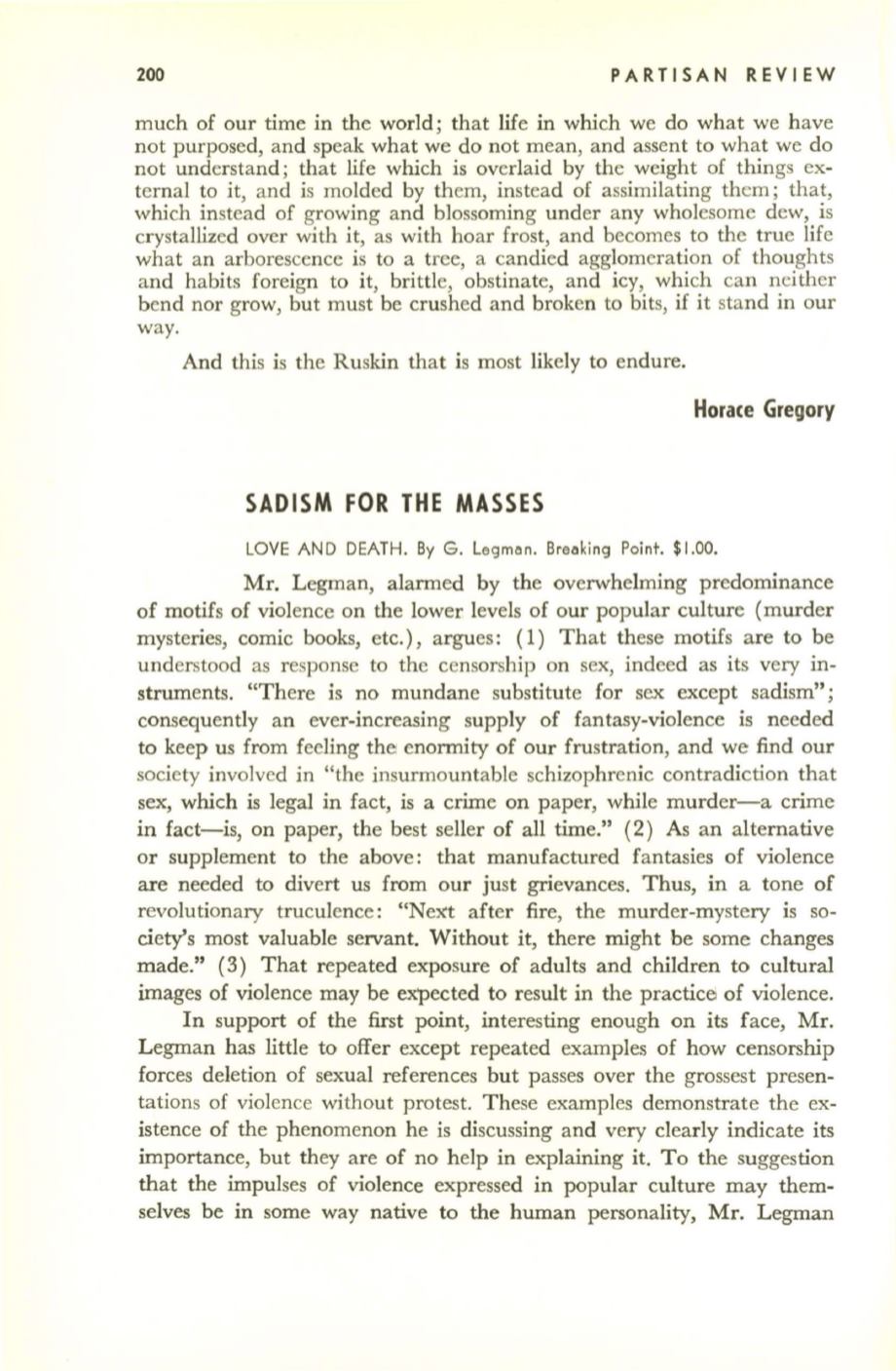
200
PARTISAN REVIEW
much of our time in the world; that life in which we do what we have
not purposed, and speak what we do not mean, and assent to what we do
not understand ; that life which is overlaid by the weight of things ex–
ternal to it, and is molded by them, instead of assimilating them; that,
which instead of growing and blossoming under any wholesome dew, is
crystallized over with it, as with hoar frost, and becomes to the true life
what an arborescence is to a tree, a candied agglomeration of thoughts
and habits foreign to it, brittle, obstinate, and icy, which can neither
bend nor grow, but must be crushed and broken to bits, if it stand in our
way.
And this is the Ruskin that is most likely to endure.
Horace Gregory
SADISM FOR THE MASSES
LOVE AND DEATH. By G. Legman. Breaking Point. $1.00.
Mr. Legman, alarmed by the overwhelming predominance
of motifs of violence on the lower levels of our popular culture (murder
mysteries, comic books, etc.), argues: (1) That these motifs are to be
understood as response to the censorship on sex, indeed as its very in–
struments. "There is no mundane substitute for sex except sadism";
consequently an ever-increasing supply of fantasy-violence is needed
to keep us from feeling the enormity of our frustration, and we find our
society involved in "the insurmountable schizophrenic contradiction that
sex, which is legal in fact, is a crime on paper, while murder-a crime
in fact-is, on paper, the best seller of all time." (2) As an alternative
or supplement to the above: that manufactured fantasies of violence
are needed to divert us from our just grievances. Thus, in a tone of
revolutionary truculence: "Next after fire, the murder-mystery is so–
ciety's most valuable servant. Without it, there might be some changes
made." (3) That repeated exposure of adults and children to cultural
images of violence may be expected to result in the practice of violence.
In support of the first point, interesting enough on its face, Mr.
Legman has little to offer except repeated examples of how censorship
forces deletion of sexual references but passes over the grossest presen–
tations of violence without protest. These examples demonstrate the ex–
istence of the phenomenon he is discussing and very clearly indicate its
importance, but they are of no help in explaining it. To the suggestion
that the impulses of violence expressed in popular culture may them–
selves be in some way native to the human personality, Mr. Legman


